
New Roses Flowering In The Garden
Hello friends,
And welcome to the last blog post of the year. Today I thought I'd share with you the new rose bush varieties flowering in the garden at the moment, that I've been waiting impatiently to flower ever since I planted them last winter (and even early this month in one case...).
First up we have my new 'Cuppa Tea' floribunda rose bred in New Zealand by Bob Matthews, from his popular for picking rose 'Cappuccino'.
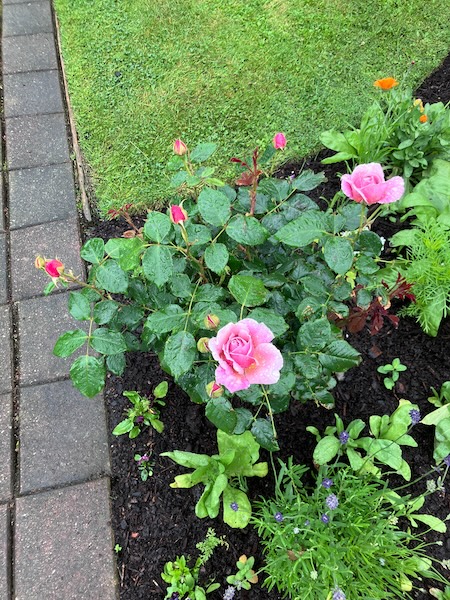
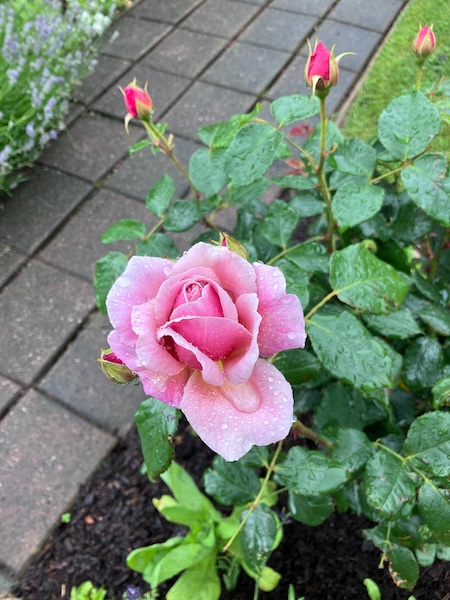
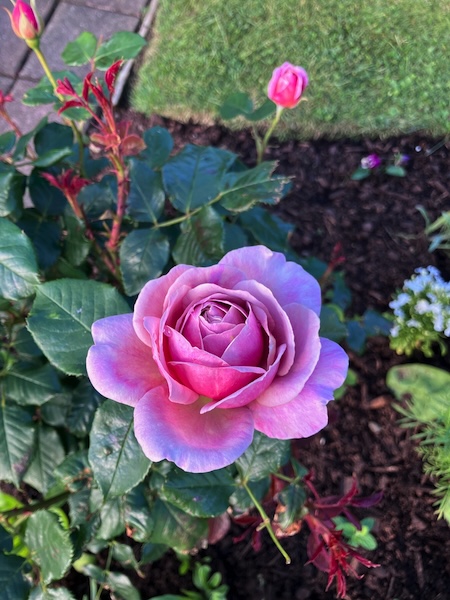
I'm so pleased to have purchased this new rose variety this past winter, the muted pink/purple/bronze shading is just so stunning, and is unlike any other rose colour I've ever seen. I can't wait for her to be covered in flowers all throughout the summer.
Next up we have my new climbing rose Azubis. This is the second Azubis rose bush that I have bought this year, the original one was wind blasted during the big North Westerly storm we had in October, and then it slowly died over the weeks afterward, no matter how hard I tried to save it. Luckily, the garden center I purchased it from had one Azubis bush remaining in late October, so I picked it up and planted it straight away into a more sheltered part of the garden. Azubis is a beautiful climber, producing large lilac blue blooms with a huge fragrance.

My Azubis rose bush may be very small at the moment, but she has already flowered once, and her single lilac bloom is huge and smells like heaven. I can't wait for her to grow up and cover our back garden fence in years to come.
And finally we have my newest rose, Chawton Cottage, another climbing rose, bred in England by Harkness Roses, and named for Jane Austen’s House which is now a museum. Chawton Cottage has sensational pearl pink blooms with a distinctive raspberry purple eye. These unique flower clusters are delicately fragrant and fantastic for picking.
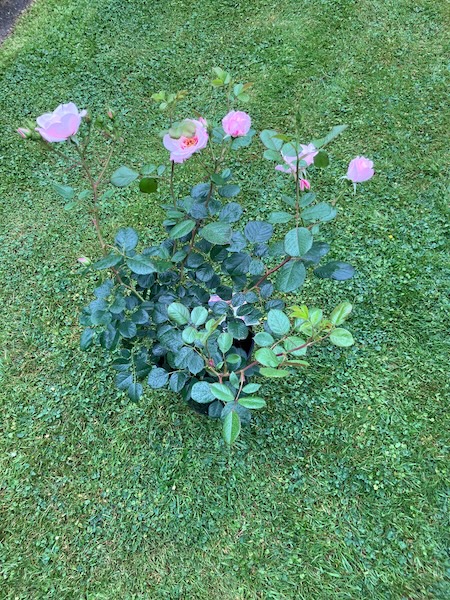
I was walking through our local Mitre 10 when Chawton Cottage caught my eye. She was flowering with multiple blooms in early December. Her unusual single flowers with a pearl pink outer flower and a deep raspberry inner, was just stunning, and bees swarmed around her. Before you could blink an eye, I had Chawton Cottage in my arms, and handed over my debit card to the cashier.
I bought her home and wandered around the garden with her until I found the perfect spot for her, up against our trellis fence at the end of the driveway.
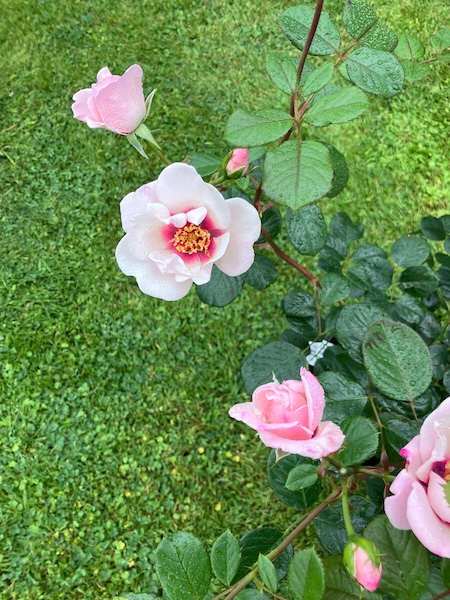
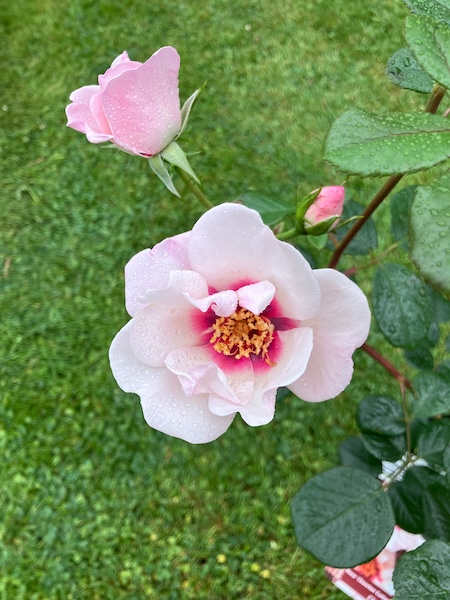
I had to do some pruning to get her to fit up against the trellis, and over the coming years I will trail her along and up the fence line to produce a wall of flowers at the end of the driveway.
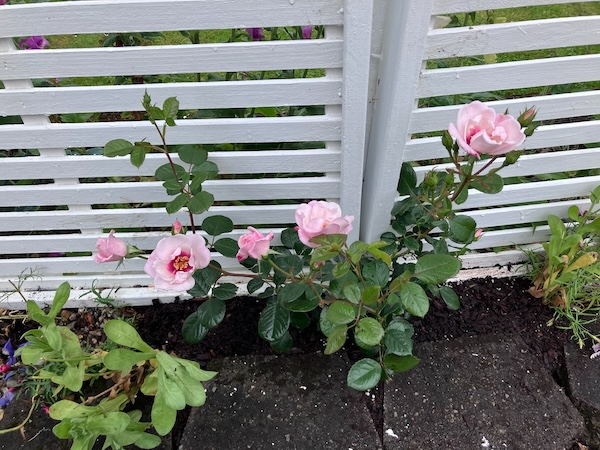
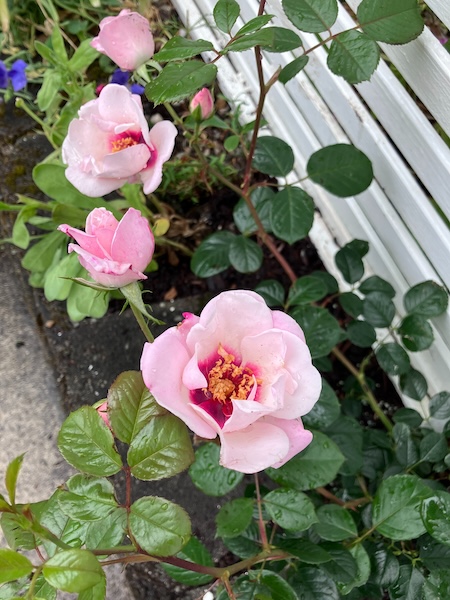
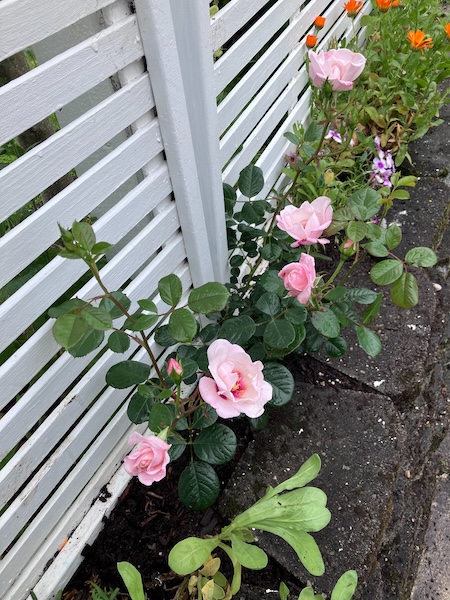
She just looks so pretty in pearl pink and green and raspberry up against the trellis, adding a lot of joy to a space that has been difficult to garden in over the years.
I hope you enjoyed a look at my new flowering rose varieties from this year. And I hope you have a wonderful Christmas and New Year period, and I'll see you again soon in January 2026...
Have a wonderful day
Julie-Ann
Want to discuss my post? Feel free to chat with me on Instagram or Mastodon or Bluesky, and now also Facebook.
Kahikatea Farm Soapwort Plant Order
Hello friends,
After failing once again to grow my own Soapwort plant from seed this year, it was time to source the plant from somewhere else.
I've been very keen for a while now to grow Soapwort so I can harvest the plant material to turn it into my own natural gentle soap solution for cleaning, and also for washing fabrics around the house. Soapwort solutions are used by museums and art galleries to clean works of art and fabrics, and a Soapwort washing solution has even been used to clean the Bayeux tapestry in the past.
After searching the internet, I found that Kahikatea Farm had Soapwort seedlings for sale, as well as some other natural dye plants on my wish list. Not wanting to waste empty space in the courier box, I put in an order for other natural dye plants including Woad, Dyer's Chamomile, White Yarrow, and Meadowsweet.

When the box arrived, and the plants were removed from their packaging safe and sound, it was time to label them with waterproof labels, and plant them out in the natural dye garden.
My Soapwort plant has lots of stems growing, so hopefully I can harvest some this growing season.

I bought a replacement Woad plant after losing the one I had growing in the garden, when I transplanted it into the new natural dyeing bed in winter this year.

I also invested in a Dyer's Chamomile plant, and I'm excited to harvest the flowers and then dye with them, so I can produce warm yellow natural dye tones this growing season.

I bought a white Yarrow plant for natural dyeing after watching Jente's YouTube Channel "Mijn Wolden". Jente is a spinner, natural dyer, and knitter from Belgium, and she is one of my favorite crafting YouTubers. If you want to have a good time watching a friendly neighbourhood chaos goblin and her fiber shenanigans (in her words), you need to follow Jente. In a recent episode on her vlog, Jente natural dyed yarn with Yarrow to produce yellow and dark green tones (using an iron bath).

And finally I bought a Meadowsweet seedling for the garden. Meadowsweet is a perennial herb that prefers to grow in damp conditions, and it has frothy clusters of cream-white flowers and a sweet scent. It has a number of natural medicinal uses, as it contains aspirin like compounds, but I really just like the plant in general, and wanted to add it to my garden.

With all these seedlings now planted into the garden, I look forward to seeing them grow, and harvest plant material from them over the summer.
Have a wonderful day
Julie-Ann
Want to discuss my post? Feel free to chat with me on Instagram or Mastodon or Bluesky, and now also Facebook.
Random Farm Silver's Fleece Project - Washing and Storing
Hello friends,
Over this past summer I processed a second raw sheep's fleece. I hadn't planned on buying another fleece, with one already waiting to be washed and processed in the garage, but when I saw a new trader called Random Farm selling raw fleeces on the Felt market place, I couldn't resist supporting a new fleece producer.
I bought a raw fleece from a Finn-Romney cross lamb ram called Silver. As a lamb he produced a beautiful silvery grey-and-white fleece, with the colour changes along the staple, with dark tips, and paler shades towards the cut end.
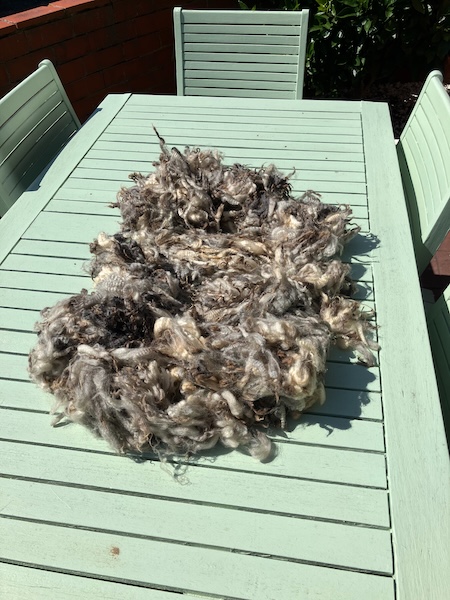
When it arrived it had a lovely soft handle, good lustre, and locks that separated easily. The locks had an average staple length of 7-8cm, and they suggested to spin it long draw for a soft woollen yarn. It was a very clean fleece with minimal vegetable matter.
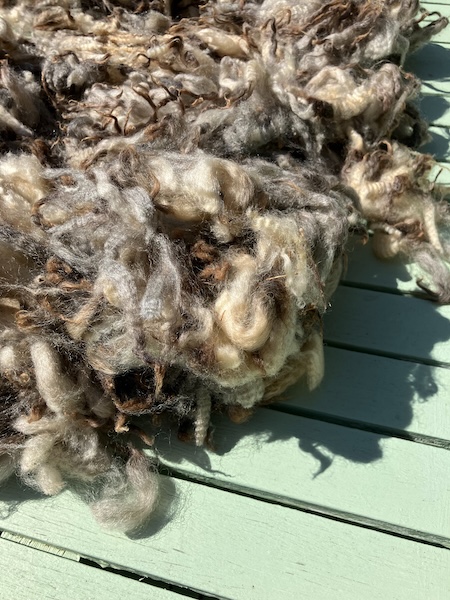
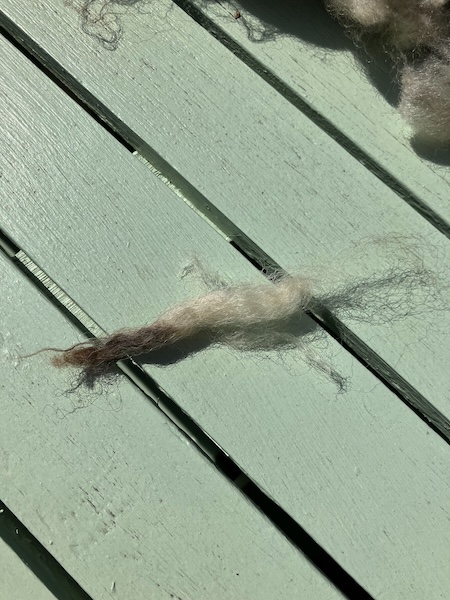
Having recently scoured and washed my Gotland Fleece, I decided to use the same method of using Unicorn Scour Power, as the resulting clean fleece was in good condition.
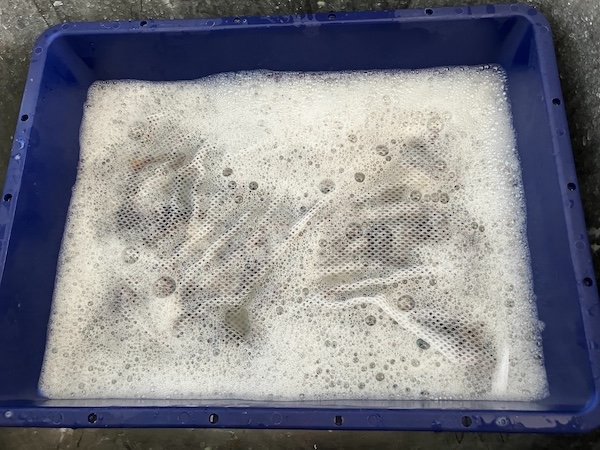
It wasn't too long before I'd scoured all the batches of raw fleece on a sunny day. After they'd dried, I flick carded a lock to see the final product. The lock has a dark brown/grey tip, and a silvery grey shade at the cut end. It has a very beautiful fine crimp, and the lock is quite smooth and fluffy.

I'm very happy with the final result, and once I get my current spinning project completed, and spin up a 100 gram sliver of fiber for a friend, I think I'll get started spinning this yarn.
Have a wonderful day
Julie-Ann
Want to discuss my post? Feel free to chat with me on Instagram or Mastodon or Bluesky
Cosmos Flowers for the 2024/2025 Summer Season
Hello friends,
Today I thought I'd share with you some of the cosmos varieties I grew in our flower garden over the summer.
First up we have the Xsenia variety, which I grew from seed I got from Emerden last winter. This cosmos variety is just stunning and really unique, and I love the dark band of pink on the edges of the petals. The shade of pink in the petals do change as the flowers get older, so by picking them at different times, you will get a range of colours from just one variety.
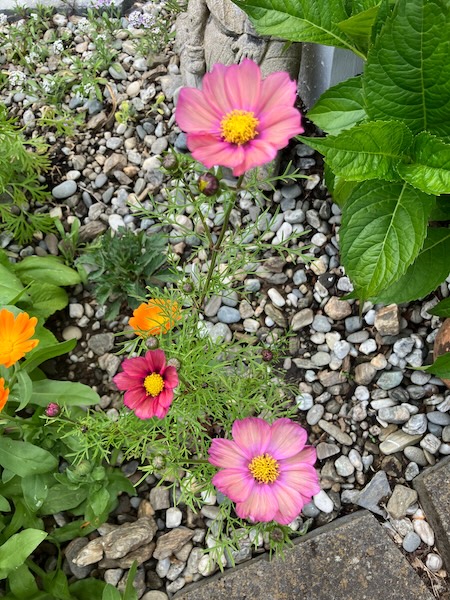
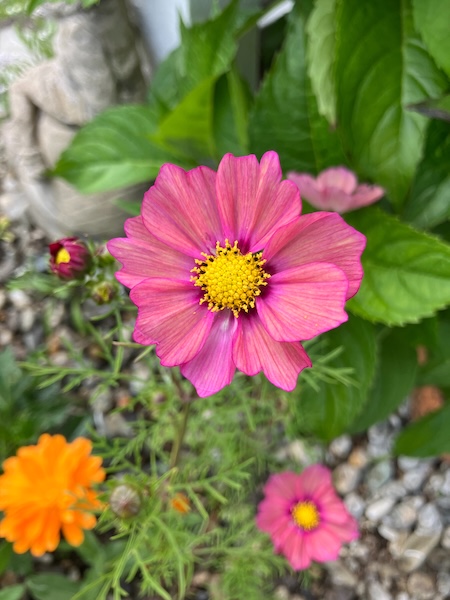
Next up we have the Apricotta cosmos variety, that I got from Kings Seeds. It has a similar apricot/pink colour to Xsenia, but the flower is much more open. It wasn't really my favorite, when compared to the Xsenia variety, so I won't be sowing any new seeds next spring.

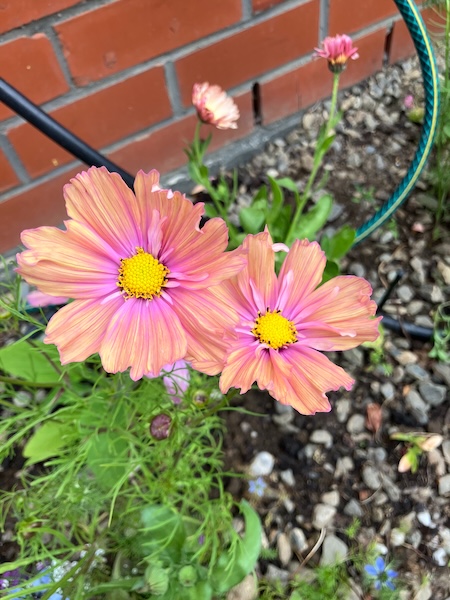
Then we have the variety, Cosmos Cupcakes White, which I bought as seed from Susie Ripley Gardening. And wow, this cosmos variety really stands out in the garden. I love the cupped flowers, that really do look like the bottoms of cupcakes. These flowers blow daintily in the breeze, making a lot of movement in the garden on windy days. I'm definitely growing these again next year.
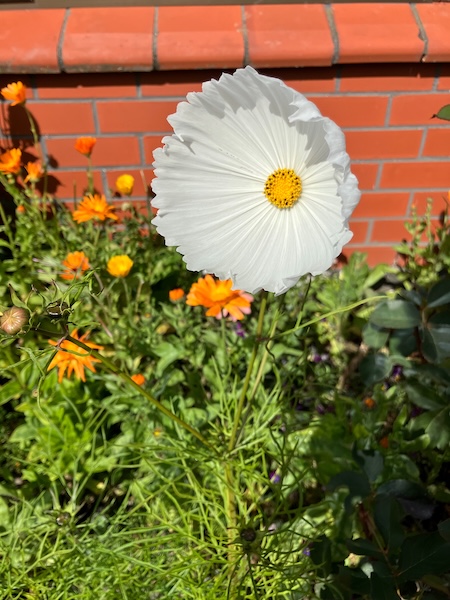
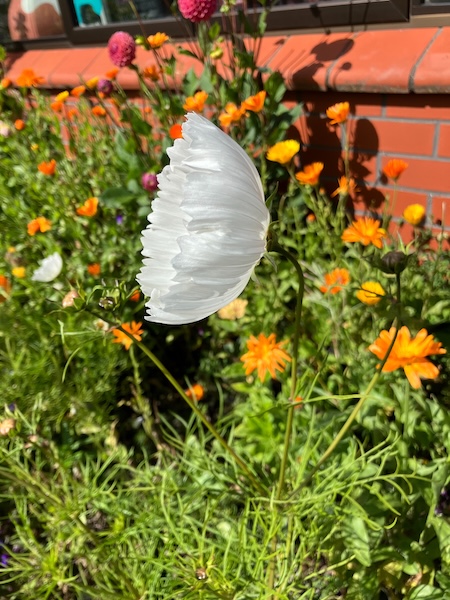
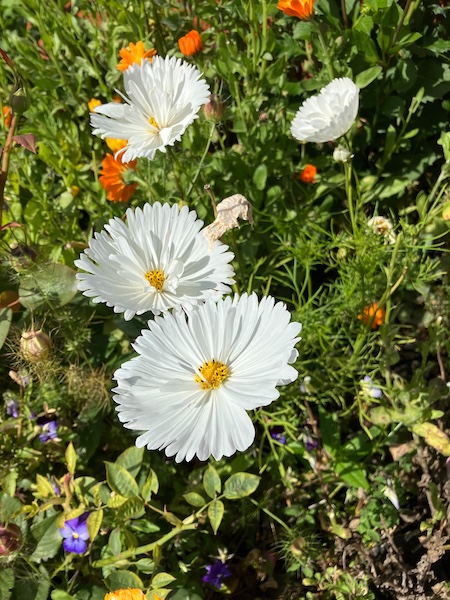
I also bought Cosmos Cupcakes Blush seeds from Susie Ripley. They're the same as Cosmos Cupcakes White, but they're a light pink in colour. They weren't as nice as the white variety, with the pink colouring not being even on the petals, so I don't think I'll buy them again.
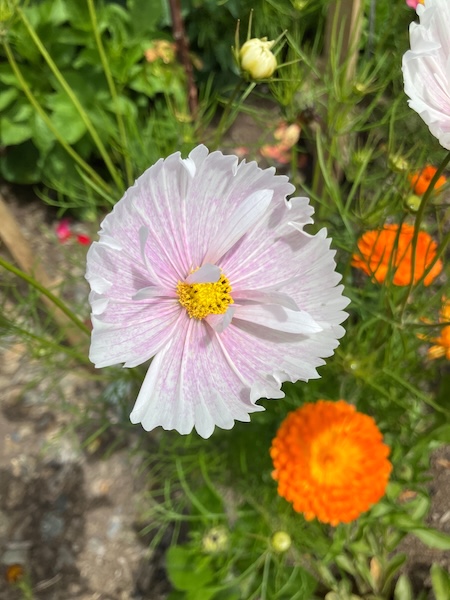
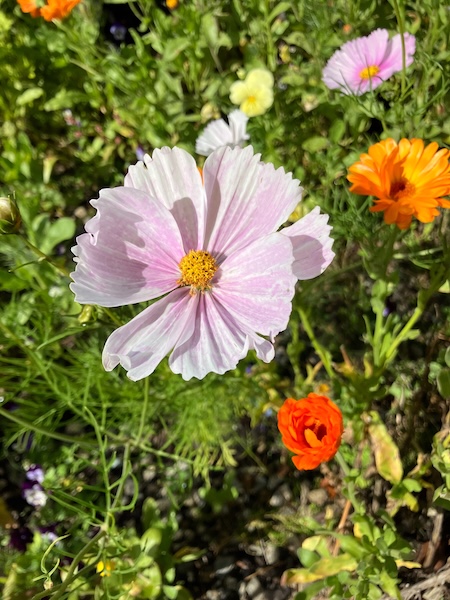
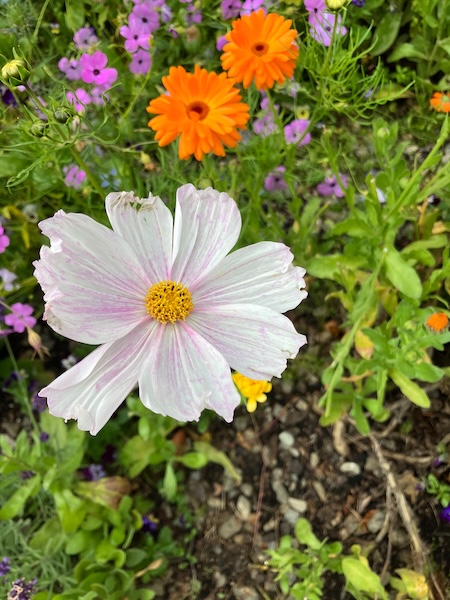
And finally, we have my new favorite cosmos variety, Cosmos Fizzy White, which I also bought as seed from Susie Ripley Gardening. These white cosmos flowers come in all sorts of variations of fizzy white flowers, and they're just so beautiful in the garden. Of the ten or so plants around my garden, each flower type was slightly different, but each one was just stunning. I'm definitely going to grow a lot more of these in the garden next spring. And as a bonus they were complete bee and butterfly magnets all summer long.
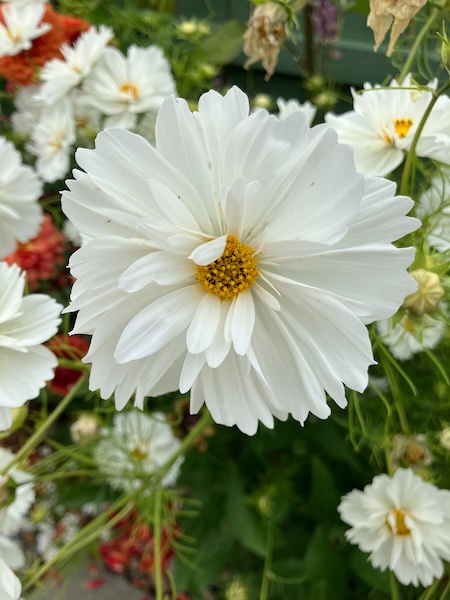
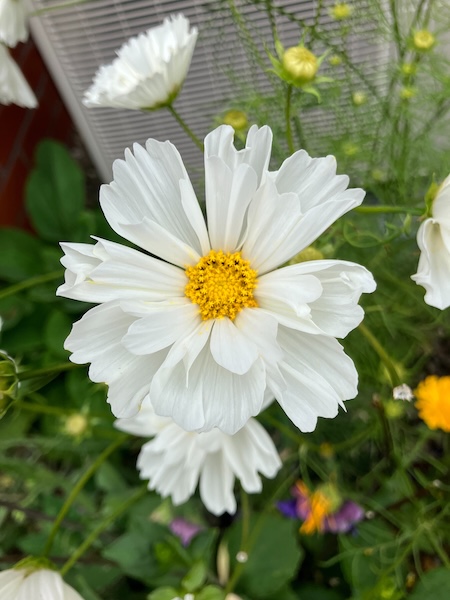
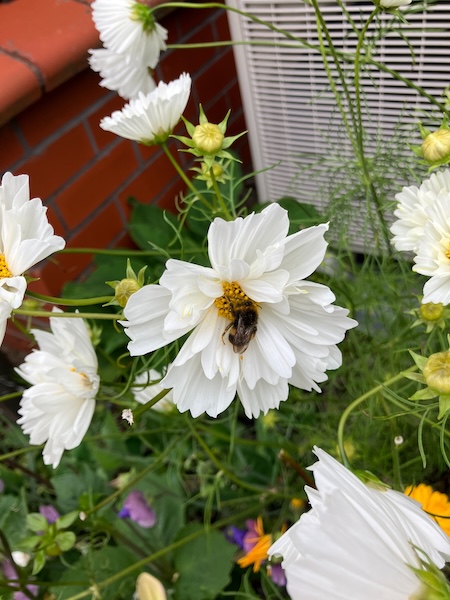
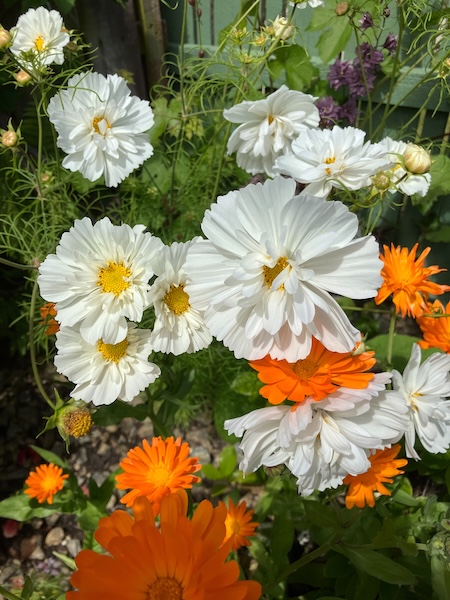
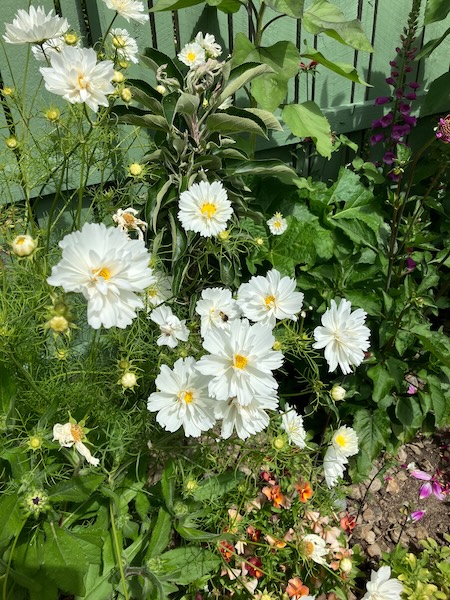
I hope you've enjoyed taking a look at all the cosmos varieties I grew this last summer. I can't wait to begin growing them again next spring.
Have a wonderful day
Julie-Ann
Want to discuss my post? Feel free to chat with me on Instagram or Mastodon or Bluesky.




